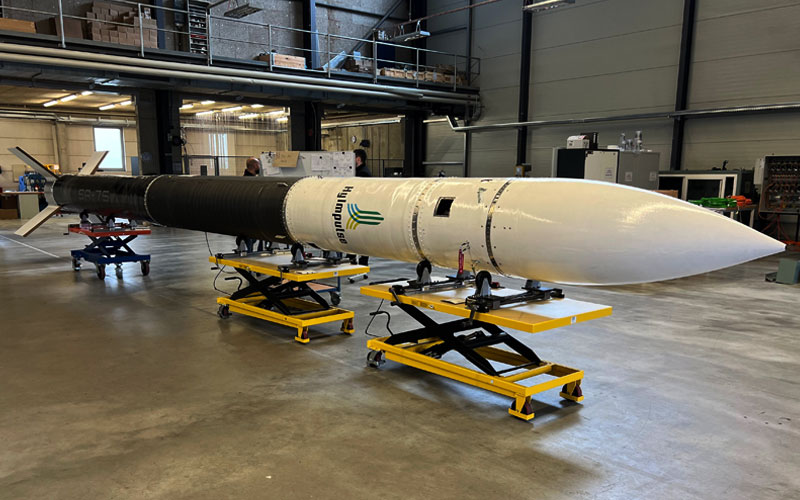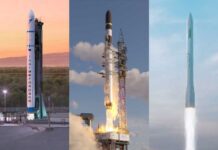
The maiden flight of the suborbital HyImpulse SR75 rocket is set to occur from the Koonibba Test Range in Australia between late April and early May.
On 23 February 2024, HyImpulse announced that the first flight-ready SR75 had begun its journey by sea from Germany to its launch site in Southern Australia. At the time, the company revealed that the launch campaign for the vehicle’s debut would commence in mid-April. In an announcement on 28 February, Southern Launch, the company that manages the Koonibba Test Range, announced that the actual flight would occur between late April and early May.
The SR75 vehicle makes use of a hybrid propulsion system that utilizes solid paraffin and liquid oxygen. According to HyImpulse, this non-explosive fuel “revolutionises rocket handling and logistics.”
“A key reason behind the development of this propulsion technology is so we can offer a rapid, efficient, and responsive rocket that can be launched anywhere around the world,” said HyImpulse Co-CEO Christian Schmierer. “Being able to transport a rocket safely with reduced logistical complexities is a key part of our strategy.”
The maiden flight of the SR75 vehicle did, however, suffer significant logistical complexities. The rocket’s debut had initially been scheduled to take place from SaxaVord in Scotland, a stone’s throw from one of the German launch startup’s propulsion testing facilities. However, following construction delays at the facility, the company was forced to shift to its backup, the Koonibba Test Range in Australia. The long journey to Australia was also made even longer due to the ongoing Red Sea shipping crisis, which forced the vessel carrying the rocket to opt for a route around the Horn of Africa.
Despite the logistical headaches, the maiden flight of the SR75 rocket will be a significant milestone for HyImpulse. A successful flight will not only allow the SR75 to enter operational service as a microgravity research vehicle but also serve to verify a number of key systems that will be utilized aboard the company’s larger SL1 vehicle. The most significant element shared by both vehicles is the HyPLOX75 hybrid motor. While the SR75 will utilize just one, the SL1 first and second stages will be powered by clusters of the hybrid motor.




